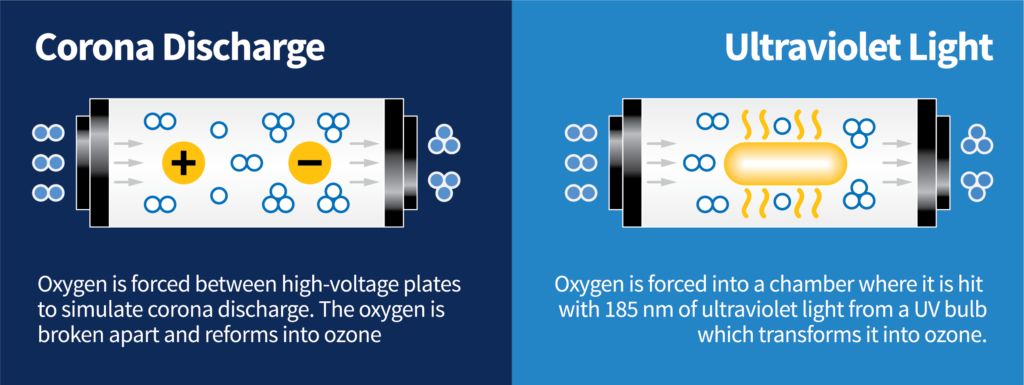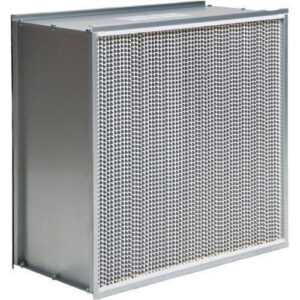Ozone Generators vs.Traditional Air Purifiers: Which Wins the Battle for Clean Air?
Table of Contents
Introduction
Ozone generators have emerged as a new technology, offering a unique and effective way to purify the air we breathe countering traditional air purifiers. Clean air is a fundamental requirement for maintaining good health and well-being. With increasing concerns about indoor air pollution and airborne contaminants, the demand for effective air purification solutions has grown significantly.
In this blog, we will explore the key differences between ozone generators and traditional air purifiers, exploring their mechanisms, benefits, and potential drawbacks to help you make an informed decision.
Let’s first understand what is Ozone & Ozone Generators;
Ozone is a gas, each molecule of Ozone is composed of three atoms of oxygen. Two atoms of oxygen form the basic oxygen molecule, the oxygen we breathe, one of the essential component of life.
Ozone generators is device designed to produce ozone gas. The extra oxygen molecule makes ozone a powerful oxidizer, capable of breaking down and neutralizing various pollutants, odors, and harmful microorganisms present in the air. This ability of Ozone makes its use essential in Air purifiers.
The Working Principle of Ozone Generators
An ozone generator, or ozone machine, is a device that converts oxygen from various sources such as ambient air, dry air, or concentrated oxygen into ozone. Ozone generators produce ozone (O3) by adding energy to oxygen molecules (O2), which causes the oxygen atoms to part ways and temporarily recombine with other oxygen molecules.
There are two ways by which Ozone generators functions: 1. principle of corona discharge 2. By ultraviolet (UV) light.
The most common type is the corona discharge generator, which passes oxygen (O2) through an electrical field, causing some oxygen molecules to split and recombine as ozone (O3). The ozone is then released into the air, where it reacts with pollutants and airborne particles, breaking them down into harmless substances.

Benefits of Ozone Generators:
- Odor Elimination: Ozone generators excel at removing persistent odors caused by smoke, cooking and pets. Unlike traditional air purifiers that may use filters or absorbents to mask odors, ozone generators break down odor molecules at the source, providing a more effective solution.
- Microorganism Control: Ozone has strong germicidal properties, effectively eliminating bacteria and viruses present in the air. This feature makes ozone generators beneficial for maintaining a healthier living environment, particularly indoor space.
- Chemical and VOC Removal: Ozone can break down harmful chemicals and volatile organic compounds (VOCs) found in cleaning products, paints, and building materials. By neutralizing these substances, ozone generators contribute to improving indoor air quality.
- No Ongoing Filter Replacement: Ozone generators do not rely on filters for air purification, avoiding the need for regular filter replacements and associated maintenance costs.

Understanding Safety Considerations
Is Ozone gas harmful for human health?
The straight answer to this question is ‘Yes’. While ozone generators offer significant benefits, it is crucial to understand their safe and proper use. Ozone, when present in high concentrations, can be harmful to human health, causing respiratory issues and irritation.
Ozone generators should not be used as a long-term solution to tackle poor indoor air quality. Instead, they are best used for occasional treatments to address specific issues and should not be operated continuously in occupied spaces.
Ozone has been extensively used for water purification, but ozone chemistry in water is not the same as ozone chemistry in air. High concentrations of ozone in air, when people are not present, are sometimes used to help decontaminate an unoccupied space from certain chemical or biological contaminants or odors.
Ozone and Indoor Air Quality Regulations:
Due to the potential health risks associated with ozone exposure, various countries and regions have established guidelines and regulations for ozone generators’ use.
United States Environment Protection Agency has recommended to avoid use of Ozone generators, owing to health hazards associated with it. You can read complete article on the link: https://www.epa.gov/indoor-air-quality-iaq/ozone-generators-are-sold-air-cleaners.
Now let us discuss about the traditional air purifiers:
HEPA (High-Efficiency Particulate Air) filters, activated carbon filters, and photocatalytic oxidation (PCO) units are some of the Traditional air purifiers, which are widely used.
They simply trap and remove the particles, allergens, and pollutants from the air rather than relying on oxidation.
Let us see them one by one;
- HEPA Filters: They are highly efficient and can remove particles as small as 0.3 microns with a 99.97% efficiency.

- Activated Carbon Filters: Activated carbon filters are effective in removing odors, smoke, and harmful chemicals from the air. They work by adsorbing the particles onto the porous surface of the carbon.
- Photocatalytic Oxidation (PCO) Technology: PCO air purifiers use ultraviolet (UV) light to create a reaction that breaks down harmful pollutants and VOCs into harmless substances.

Benefits of Traditional Air Purifiers:
- Low Ozone Emission: One of the key benefit of traditional air purifiers is, they do not produce harmful ozone as part of their purification process.
- Particle Filtration: Traditional air purifiers, particularly those equipped with HEPA filters, are highly efficient at removing airborne particles, improving air quality and reducing allergy symptoms.
- Safe for Continuous Use: Traditional air purifiers can be safely operated continuously in occupied spaces, providing ongoing air purification without the need for evacuation during operation.

![]()
Drawbacks of Traditional Air Purifiers:
- Limited VOC and Chemical Removal: While activated carbon filters and PCO units can remove some VOCs and chemicals, they may not be as effective as ozone generators in breaking down a wide range of pollutants.
- Ongoing Filter Replacement: Regular maintenance and timely replacement of filter is major drawback, which involve cost.
Conclusion
Both methods provide valuable contribution to improve air quality. Each has its own pros and cons. Traditional air purifiers though require regular maintenance but are more safe and environment friendly. Whereas Ozone generator might be harmful for human health if inhaled in large amount.
Whichever technology you choose, investing in clean air is an investment in your health and overall quality of life.
You can read our article on Hydrogen Fuel Cars and how it is shaping future of Electric Vehicles in India in the link below: Embracing the Future: Hydrogen Fuel Cars in India (blognewstime.com)

